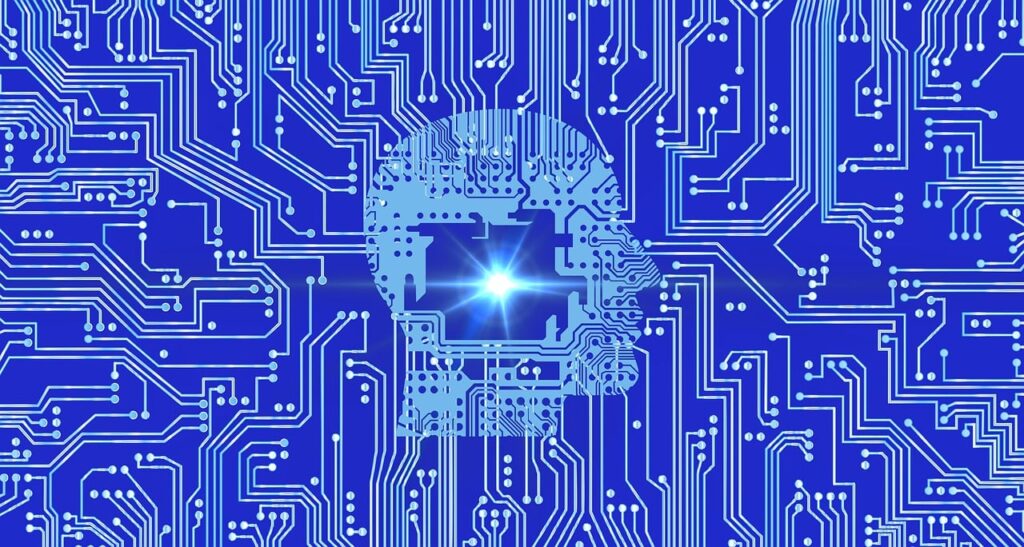Cryptocurrency miners have been at the forefront of technological advancements for years now, using their powerful computers to mine digital currencies like Bitcoin and Ethereum. However, the mining process itself has become more complex, requiring more computing power than ever before. As a result, many cryptocurrency miners have started exploring new ways to use their advanced hardware, including artificial intelligence (AI).
AI is a rapidly growing field, with applications in everything from healthcare and finance to transportation and entertainment. However, one of the biggest challenges facing AI researchers is the need for massive amounts of computing power. This is where cryptocurrency miners come in. With their powerful computers and experience optimizing them for maximum efficiency, they are well-positioned to tackle the challenges of AI.
One of the key ways that cryptocurrency miners are contributing to the next stage of AI is by providing the computing power needed to train deep learning algorithms. Deep learning is a type of machine learning that involves training neural networks with vast amounts of data. However, the process of training these algorithms is computationally intensive, requiring powerful hardware and massive amounts of energy.
Cryptocurrency miners have already developed sophisticated systems for managing and optimizing their hardware, making them well-suited to the task of training deep learning algorithms. They can use their experience in hardware optimization to create custom configurations that maximize performance while minimizing energy consumption. This can lead to significant cost savings, as energy costs can be a major expense for AI researchers.
Another way that cryptocurrency miners are contributing to AI is by developing new hardware specifically for AI applications. Many cryptocurrency miners have already developed custom hardware, such as graphics processing units (GPUs), specifically for mining digital currencies. These same GPUs can also be used for AI applications, as they are well-suited for parallel computing tasks like deep learning.
In addition to GPUs, cryptocurrency miners are also exploring other types of hardware for AI applications, such as field-programmable gate arrays (FPGAs) and application-specific integrated circuits (ASICs). These specialized hardware solutions can be optimized for specific AI tasks, providing even greater performance and energy efficiency.
One of the biggest challenges facing AI researchers is the need for large datasets to train deep learning algorithms. Cryptocurrency miners can help with this by providing access to massive amounts of data from their mining operations. For example, cryptocurrency miners can provide access to historical transaction data for a specific digital currency, which can be used to train algorithms for predicting future price movements.
Cryptocurrency miners can also help with data labeling, which is the process of categorizing and tagging data to make it more usable for AI algorithms. This can be a time-consuming and labor-intensive task, but cryptocurrency miners can leverage their experience with crowdsourcing to quickly and efficiently label large datasets.
However, there are also challenges that come with using cryptocurrency miners for AI applications. One of the biggest challenges is the environmental impact of cryptocurrency mining. The process of mining digital currencies requires massive amounts of energy, which can contribute to climate change and other environmental issues.
To mitigate these concerns, some cryptocurrency miners are exploring ways to use renewable energy sources, such as solar or wind power, to power their mining operations. This not only reduces their environmental impact but can also lead to cost savings in the long run.
Another challenge is the cost of hardware. While cryptocurrency miners may have access to powerful hardware, the cost of this hardware can be prohibitively expensive for many AI researchers. However, this is a problem that is slowly being addressed as hardware costs continue to come down over time.
In conclusion, cryptocurrency miners are leading the next stage of AI by providing the computing power and hardware needed to train deep learning algorithms and develop new AI applications. With their experience in hardware optimization and crowdsourcing, they are well-positioned to tackle the challenges of AI. However, the environmental impact of cryptocurrency mining and the cost of hardware remain significant challenges that must be addressed in order to fully realize the potential of this intersection between cryptocurrency mining and AI. It is important for cryptocurrency miners and AI researchers to work together to find solutions that balance the need for powerful computing with the need for sustainable and environmentally responsible practices. If these challenges can be overcome, the future of AI looks bright, with the potential for groundbreaking advances in fields such as healthcare, finance, transportation, and more.






